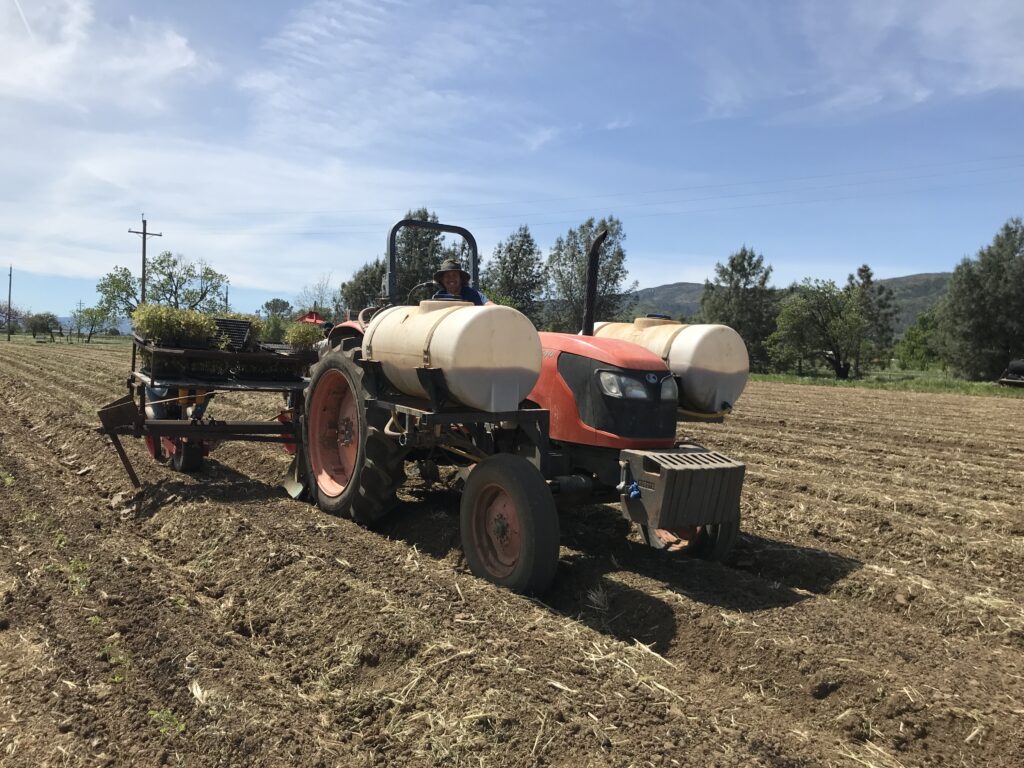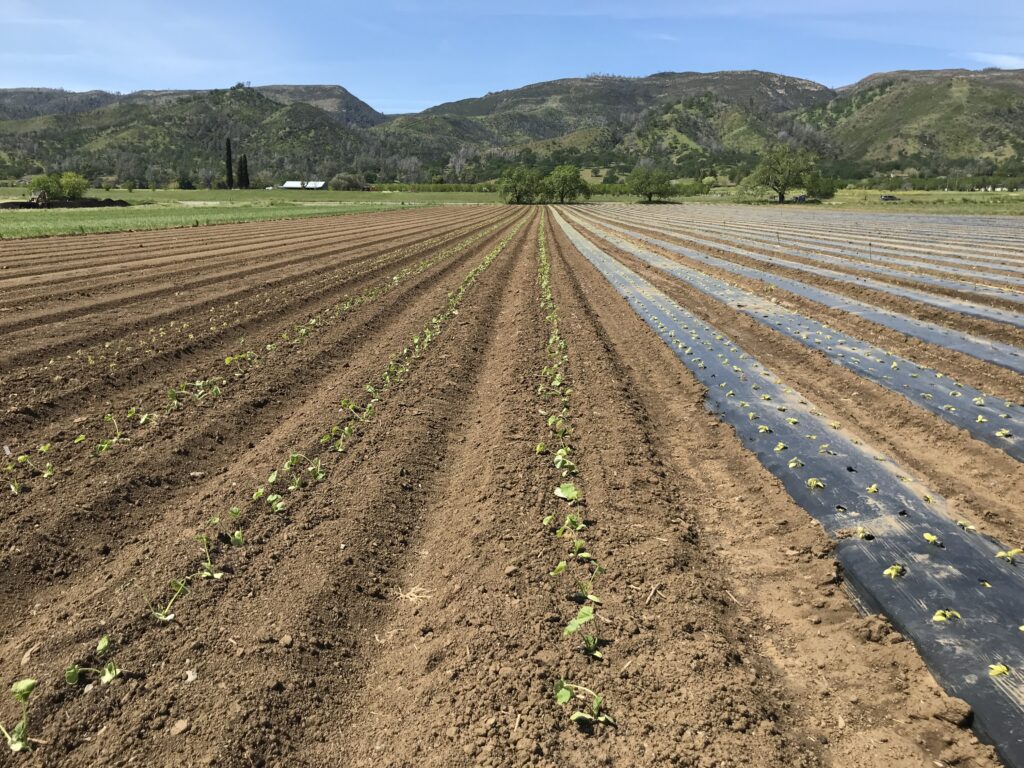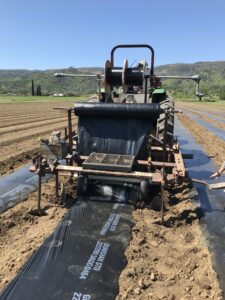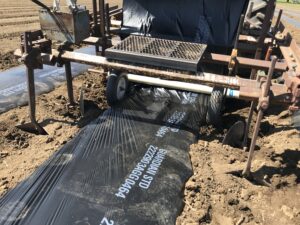
It’s supposed to get pretty toasty later this week! Forecasts change, and can be wrong, but as of Monday morning, the prediction is that it will be above 90 degrees later this week. Good thing we planted more heat-loving summer crops last week (onions, basil, summer squash, and a whole field of heirloom tomatoes) that can take advantage of that heat. We’re behind schedule (we usually plant them two to four weeks earlier) but better late than never.
All transplanters basically do the same thing: a person or machine creates a hole or furrow in the soil, a plant goes in that hole or furrow, then the dirt is packed in around the plant, making sure to cover up the fast-draining soil from the seed tray so that the plant doesn’t dry out. We use mechanical transplanting for as much as possible, but some things (onions, flowers, and a few others) are too delicate, need to be placed closer together than we can with a machine, and/or have a shape that won’t work with the transplanter (they’ll get stuck). A few people lay out the transplants in the row with the correct spacing and then others come and tuck them in so that the soil surrounding the roots is no longer visible. When it comes to machines, we’ve got a few different options (most of which we’ve adapted and built ourselves) and we choose primarily based on the crop we’re planting.
For the heirloom tomatoes, we use a three row transplanter. Here’s a video of the tomato transplanting process.
For a description of what you’re seeing (especially since this is not Oscars-quality filmography):
The transplanter spans three beds at a time and plants one tomato plant in each bed. The three people on the back of the tractor lift the plants out of their trays and drop them root-first into rotating cups, one per cup. As the cup moves to the furthest away position, the bottom of the cup opens and the plant drops into a furrow. The furrow was created by a “shoe”, and then the wheels pack soil around the transplant. A few people walk behind the tractor to make sure that the plants are at the correct depth and filling in missing plants. If the depth isn’t right, we’ll stop the tractor and adjust the depth of planting shoe. One thing this video doesn’t show well – this transplanter applies water (or in this case, Andrew’s special concoction) to the plants below the surface, providing a little extra time to set up irrigation, and providing an extra nutrient boost.

When working with plastic, we use a jab planter or a water wheel (sorry – no video). We also use these two transplanters that we also use when not planting into plastic (like the squash, bottom photo, in the middle) and for multiple rows per bed (like the basil, on the far left and the two rows in plastic on the right). Planting a single row at a time is slower and laying down the plastic mulch can be tedious and frustrating. Plastic has its share of environmental problems (more about the impact here).
So why use it? It’s great at controlling weeds, retaining water, and heat management. For the cherry tomatoes, we’re using black plastic which will make things warmer and speed up the growth of these early-season plants. For peppers and the first fall greens, we plant into white mulch to reduce the heat. We have occasionally used straw mulch, but that can blow away in wind (which we have a lot of), and we’ve done some experimentation using cover crops mulch on a very small scale. There are other options out there (like wool!) but many aren’t feasible on our scale and/or the tradeoffs won’t work as well. The overall environmental impact of plastic mulch isn’t so black and white either; without it, we’d be using more water, using energy to pump that water, and probably using the tractors more for weeding, all of which have an environmental cost. For those who are curious to learn more about the alternatives, I’d recommend this piece, this one, or for a very good (but longer) dive, this one.


So we use it sparingly, but some tomatoes, peppers, and eggplants, along with a smattering of other plants will go into plastic mulch. And this year, there is so much planting to catch up on that some things we might have considered putting in mulch this year will be going without. We don’t have the time to set up the plastic, and it seems like it’s going to be plenty warm.
Elaine Swiedler, CSA Manager
